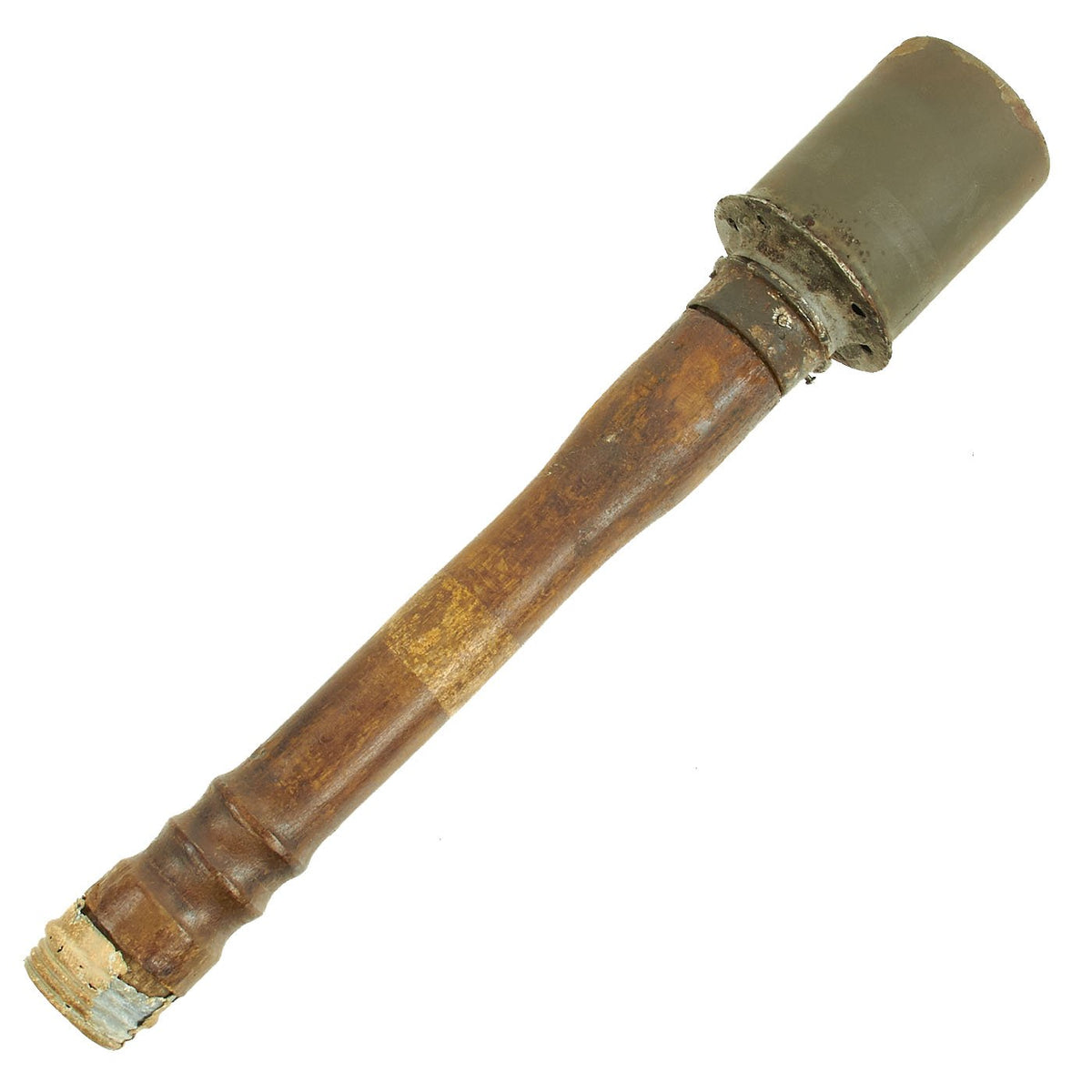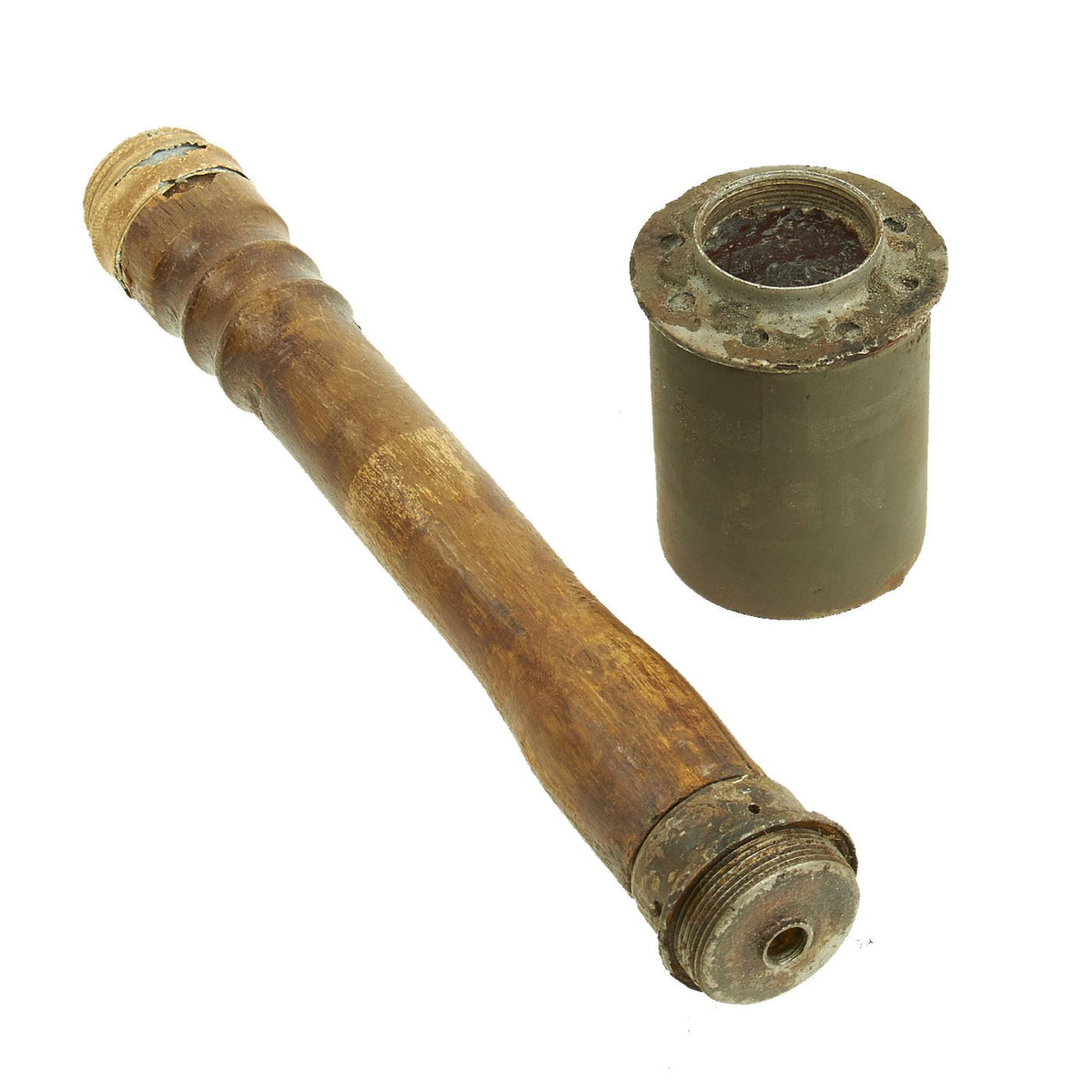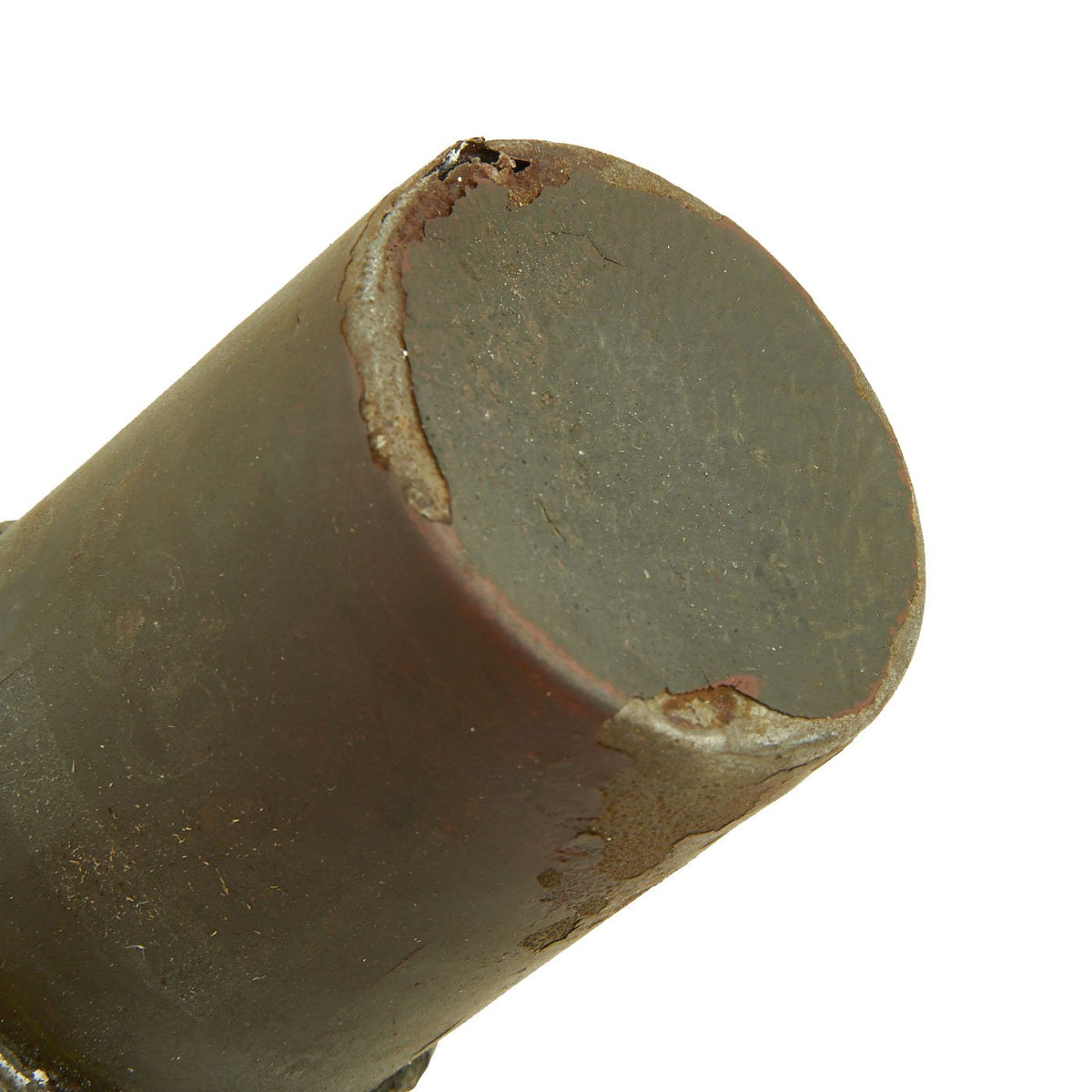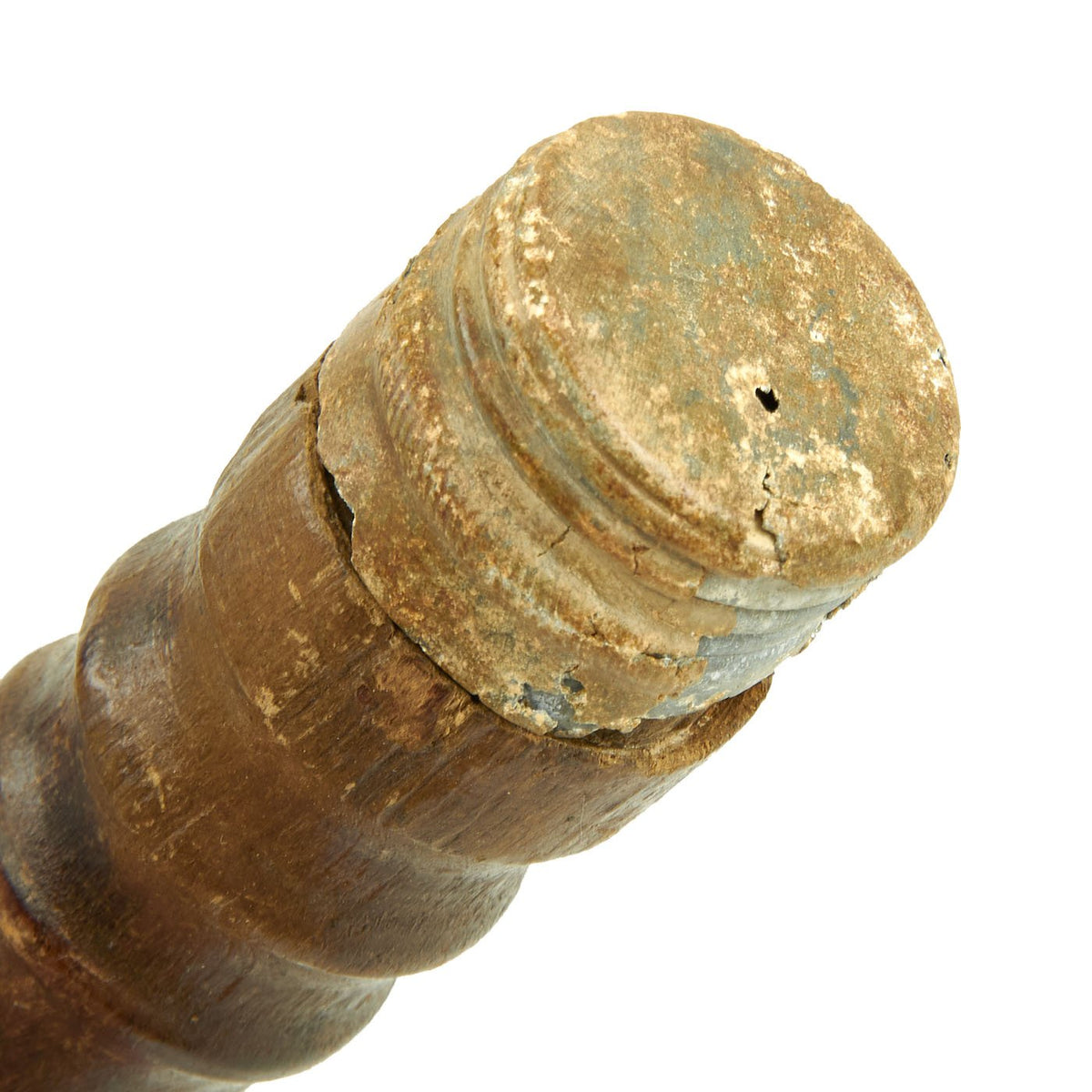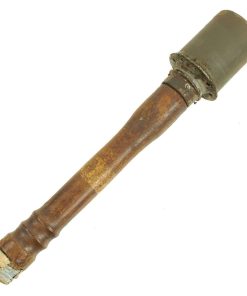Original German WWII 1940 dated Nb-Hgr 39b Inert Smoke Stick Grenade by Richard Rinker Original Items
$ 695,00 $ 208,50
Original Item: Only One Available. This is an excellent example of an extremely rare NB.Hgr.39 or Nebelhandgranate 1939 German Stick Grenade. This very nice example, acquired from a private estate sale, has been demilitarized according to specifications by the BATF. It still retains its original paint and the original markings can be seen on both the head and shaft of the grenade.
In 1939 the Stielhandgranate design was modified to create the Nebelhandgranate “smoke hand grenade”. Smoke was used for masking protection from enemy fire and signaling. There were two variants, the Nb.Hgr.39 and the Nb.Hgr.39b. The “b” version differs in that the handle, has raised ridges and an additional white band to aid in identification at night, and quickly replaced the original version. The Nb.39 pot contained a mixture of zinc powder and hexachlorethane which produced a smoke cloud upon ignition. Holes in the bottom of the head provided an escape path for the smoke as it burned.
The warhead bears original paint including very faint white paint that reads Nb. Hgr. 39 , along with the white band, for ease of identification as a smoke grenade and not a traditional M1924. The head also has the correct ventilation holes on the underside, where the smoke would exit once the grenade went off. There has been some wear, but the top is still clearly marked with ЯR 784 1940, which corresponds to the manufacturer Richard Rinker G.m.b.H. in Menden/Iserlohn, the original designer of the M24 grenade. This company had many factories and subcontractors, and records indicate that contractor “784” was A. Grothe & Söhne GmbH Elektrotechnische Fabrik, in Köln-Zollstock. This was all done to obscure the location of the makers.
The fine wood shaft bears a faint correct white paint band, tooled grip ridges, and a faint 1940 date marking. The original screw cap is still present, however it has oxidized and completely frozen to the threaded fitting underneath, and they are both loose on the bottom of the fhaft..
In WWII the stick of the German M24 (Model 24) grenade provided a lever, significantly improving the throwing distance. The Model 24 could be thrown approximately 30 to 40 yards, whereas the British Mills bomb could only be thrown about 15 yards. The design also minimized the risk of the grenade rolling downhill back towards the thrower when used in hilly terrain or in urban areas. These grenades were extremely useful for clearing out entrenched infantry positions.
As grenades were disposable, encountering them on the market is very rare, making this an excellent opportunity to acquire one to complete a WW2 ordnance collection.
Fast Shipping with Professional Packaging
Thanks to our longstanding association with UPS FedEx DHL, and other major international carriers, we are able to provide a range of shipping options. Our warehouse staff is expertly trained and will wrap your products according to our exact and precise specifications. Prior to shipping, your goods will be thoroughly examined and securely secured. We ship to thousands clients each day across multiple countries. This shows how we're dedicated to be the largest retailer on the internet. Warehouses and distribution centres can be located throughout Europe as well as the USA.
Note: Orders with more than one item will be assigned a processing date depending on the item.
Before shipping before shipping, we'll conduct a thorough inspection of the items you have ordered. Today, the majority of orders will be delivered within 48 hours. The delivery time will be between 3-7 days.
Returns
The stock is dynamic and we cannot completely manage it because multiple stakeholders are involved, including our factory and warehouse. So the actual stock may alter at any time. It's possible that you may not receive your order once the order has been made.
Our policy is valid for a period of 30 days. If you don't receive the product within 30 days, we are not able to issue a refund or an exchange.
You can only return an item if it is unused and in the same state as the day you received it. You must have the item in its original packaging.
Related products
Uncategorized
Uncategorized
Uncategorized
Uncategorized
Uncategorized
Armored Burgonet Helmet & Polearm from Scottish Castle Leith Hall Circa 1700 Original Items
Uncategorized
Uncategorized
Angolan Rebel 1970s era 60mm Inert Display Mortar from Angolan Civil War Original Items
Uncategorized
Armoured Fighting Vehicles of the World: AFVs of World War One (Hardcover Book) New Made Items
Uncategorized
Uncategorized
Uncategorized
Uncategorized
Band of Brothers ORIGINAL GERMAN WWII Le. F.H. 18 10.5cm ARTILLERY PIECE Original Items
Uncategorized
Australian WWII Owen MK1 Machine Carbine SMG Custom Fabricated Replica with Sling Original Items
Uncategorized
Uncategorized
